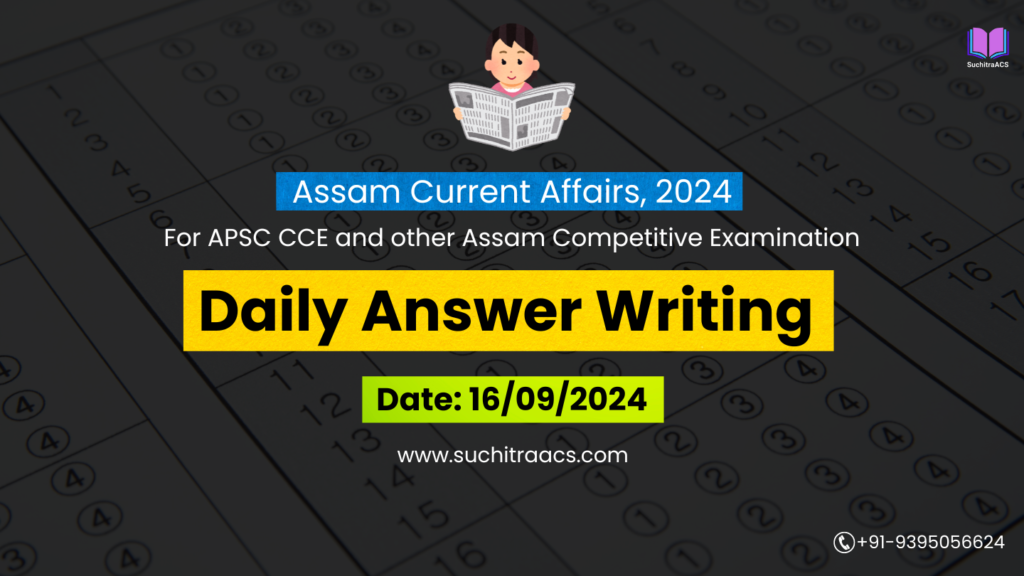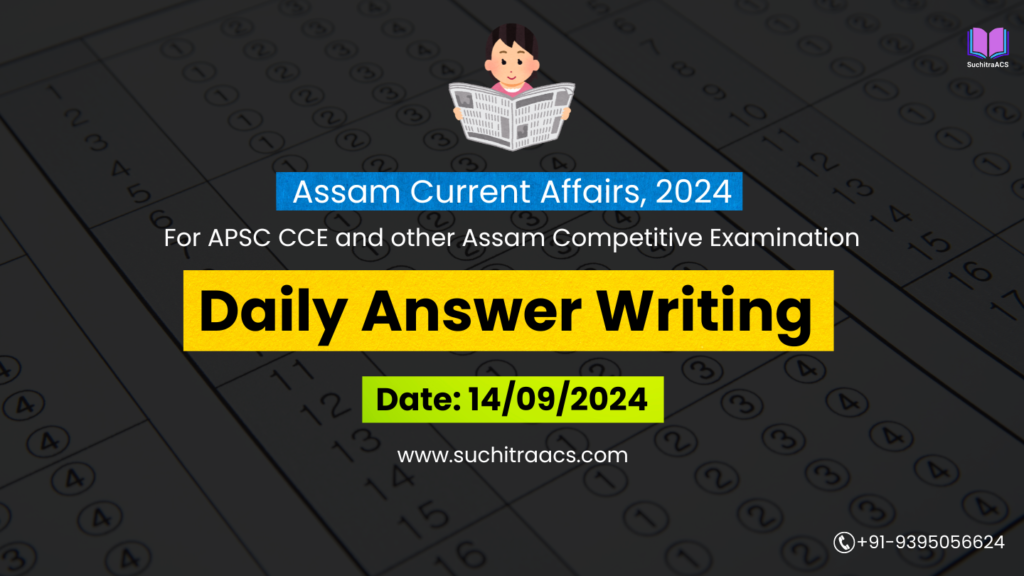APSC Answer Writing (Daily) based on Assam Tribune – 10/10/2025
For APSC CCE and other Assam Competitive examinations aspirants, practicing Daily Answer Writing is vital. This blog covers the most important Main question and its model Answer from the Assam Tribune today (10-10-2025).
📝 Model Answer
Q. “Discuss the significance and challenges of Assam’s Renewable Energy Policy 2025 in ensuring a sustainable and self-reliant power future for the state.”
📘 GS Paper III – Energy | Environment | Economy
📘 GS Paper V – Assam-specific: Infrastructure & Sustainable Development
Introduction
The Assam Renewable Energy Policy 2025–2032 marks a strategic shift from conventional to sustainable, decentralized, and climate-resilient power generation.
By targeting 5,000 MW renewable capacity — primarily through solar–hydro hybrid systems and floating solar parks — the policy seeks to strengthen energy security, promote green growth, and align Assam with India’s national renewable energy goals and Net Zero 2070 vision.
Body
1️⃣ Importance of the Policy
| Dimension | Description |
| Energy Security | Reduces dependence on imported coal and erratic central power supply. Assam currently imports ~65% of its power needs. |
| Environmental Benefits | Mitigates carbon emissions; aligns with India’s Panchamrit commitments at COP26. |
| Economic Opportunity | Estimated ₹25,000 crore investment potential; creates jobs in manufacturing, installation, and maintenance. |
| Decentralized Access | Hybrid and mini-grid systems provide reliable electricity to char and hill areas. |
| Hydro–Solar Synergy | Combines day-time solar and night-time hydro power for grid stability and efficient utilization. |
| Climate Resilience | Provides clean, adaptive power in flood- and storm-prone regions. |
2️⃣ Key Policy Features
- 5,000 MW target by 2032 (3,000 MW solar, 1,500 MW hydro, 500 MW hybrid/biomass).
- Floating Solar Parks: Majuli (100 MW) and Chandubi Lake identified.
- Viability Gap Funding (VGF): To attract private participation.
- Rooftop Solar Mission: 1 lakh government buildings, 2 lakh homes by 2030.
- Green Energy Corridor: Strengthening transmission network for renewable integration.
- Fiscal Incentives: Tax rebates, stamp duty waivers, and power purchase guarantees (25 years).
3️⃣ Challenges in Implementation
| Challenge | Explanation |
| Land Acquisition Constraints | Non-agricultural land availability is limited due to high population density in plains. |
| Transmission Bottlenecks | Grid congestion in Upper Assam; limited storage infrastructure. |
| High Capital Cost | Renewable projects need upfront investment and long gestation periods. |
| Monsoon Dependency | Solar generation fluctuates with cloud cover and floods. |
| Institutional Capacity | Limited technical expertise in hybrid project operation and maintenance. |
| Financing Risks | Private investors seek long-term tariff assurance and fast regulatory approvals. |
4️⃣ Government & Institutional Measures
- Assam Green Energy Development Programme (AGEP): Promotes state-level renewable clusters.
- Partnerships: NTPC, NHPC, and AEDA for technology sharing and project design.
- ADB-Assam Renewable Energy Roadmap (2024): Focus on hybrid energy and floating solar feasibility.
- Skill Development: Green Technician Training under PMKVY and ITIs.
- Regulatory Support: Power Purchase Agreements (PPAs) assured by APDCL for renewable developers.
5️⃣ Way Forward
- Regional Energy Pool: Integrate with Northeast Power Grid for energy exchange across states.
- Battery & Pumped Storage Systems: Strengthen grid reliability and balance renewable intermittency.
- Community Ownership Models: Co-operative mini-grids for rural energy entrepreneurship.
- Research Collaboration: Leverage IIT Guwahati for R&D in hybrid energy and floating solar tech.
- Policy Convergence: Align with National Green Hydrogen Mission and KUSUM Scheme for agricultural energy needs.
- Periodic Review Mechanism: Monitor emission savings, investment flow, and employment creation annually.
Conclusion
The Assam Renewable Energy Policy 2025 exemplifies the state’s transition toward a green, inclusive, and resilient power ecosystem.
By embracing solar–hydro synergy, encouraging innovation, and fostering public–private collaboration, Assam can emerge as the renewable energy hub of the Northeast, ensuring both economic growth and ecological balance — a vital stride toward “Atmanirbhar Urja, Atmanirbhar Assam.
✨ Looking for top-quality APSC Mains Guidance with Personalised Mentor?

🔔 Join Our WhatsApp Study Group!
For exclusive access to premium quality content, including study materials, current affairs, MCQs, and model answers for APSC CCE and other Assam competitive exams.
Click here to join: SuchitraACS Study WhatsApp Group
📚 Want to know more about SuchitraACS’s most affordable courses?
Click here to know more: SuchitraACS Courses for APSC CCE and Assam Competitive Examinations



